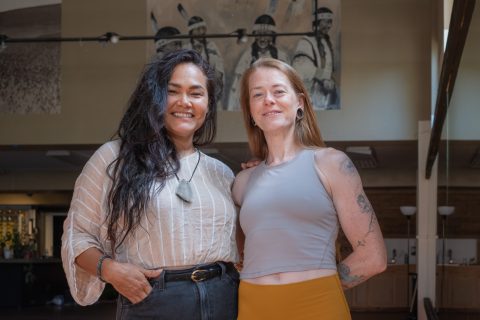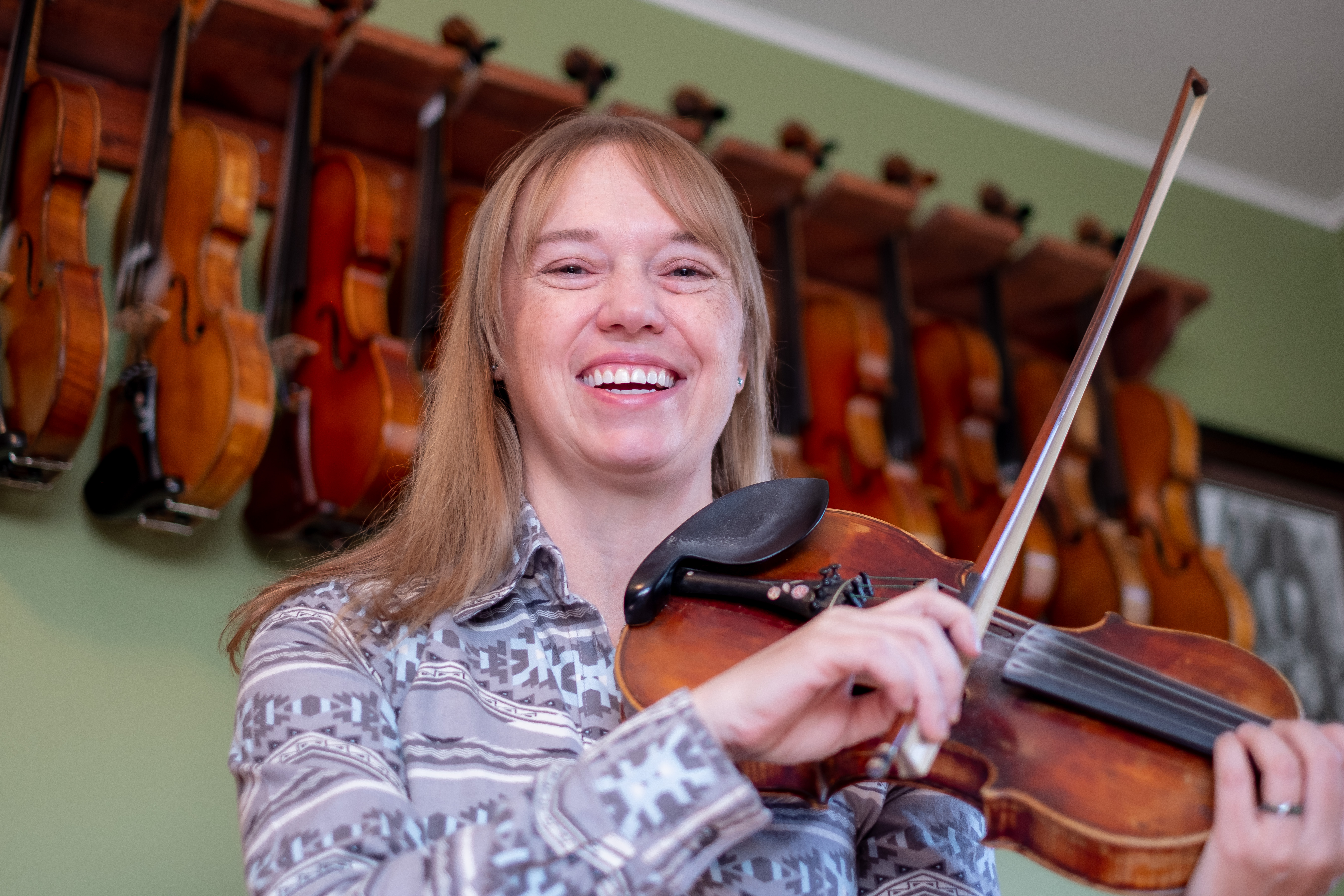Rodeo industry unites against proposed Los Angeles ban
Published 7:00 am Thursday, August 8, 2024

- Cowboy Damian Brennan rides Big Bend Rodeo’s Crash Gate at the St. Paul, Ore., Rodeo.
Los Angeles may be synonymous with show biz stardom and American culture, but it’s seldom considered a bastion of Western ranch and livestock traditions.
Over the past four years, though, the city has become ground zero in the clash between the rodeo industry and animal rights advocates.
Trending
“You can’t let the second biggest city in the U.S. ban our way of life — at least, not without a fight,” said Dave Duquette, a lead organizer of the Western Sports Industry Coalition, which defends rodeo events.
Since 2020, attempts to prohibit rodeo events under a Los Angeles city council ordinance have run into strong multicultural resistance that’s so far managed to ward them off.
Joining forces was no simple feat, given the historic animosity between many rodeo organizations, as well as tensions among the Black and Hispanic communities in L.A., said Duquette, who’s also founder of the Western Justice Legislative Fund, which created the coalition.
Originally, L.A.’s city council considered eliminating certain equipment commonly used in rodeos, but that version of the ordinance was eventually scrapped.
“What they failed to recognize is it will shut down a variety of other equestrian sports,” said Sean Gleason, CEO of the Professional Bull Riders.
Late last year, the ordinance was revised to become an outright ban on rodeo events, which may seem like a setback for the coalition. However, the amendment must now be reviewed and formalized by city attorneys, which rodeo supporters hope will slow, if not halt, the proposal’s momentum.
Trending
“It’s certainly not over, it’s certainly not dead, but we’re back to the drawing board,” said David Gershwin, a local lobbyist hired by the coalition to fight the ordinance.
The city council may instead focus on homelessness, infrastructure problems and other concerns rather than revisit the rodeo controversy, he said.
“There are other issues that are far more pressing to the day-to-day lives of all Angelenos,” Gerschwin said.
‘Rodeo came together’
“The greatest thing that came out of this is that rodeo came together in solidarity over one issue,” Duquette said.
Rodeo experts say the city may have seemed like easy pickings for critics of the sport, given its progressive politics and weak ties to animal agriculture.
However, L.A.’s capacity for imposing far-reaching societal changes convinced competing rodeo organizations to set aside their rivalries and unite against an ordinance that would effectively cast them out of the city.
“If we lose, it’s going to spread like wildfire through the rest of the country,” said Esteban Escebedo, who helped galvanize opposition to the ban among “charros,” or Mexican-American rodeo cowboys.
The Los Angeles city council’s proposal forced various rodeo organizations to look beyond their individual interests and recognize a systemic threat to the industry, experts say.
“That might have been part of the problem in the past. There was so much competition between the organizations that they wouldn’t or couldn’t work together,” Scott Dorenkamp, livestock program and government relations manager for the Professional Rodeo Cowboys Association.
The stakes are even bigger than the future of rodeo. The effort represents a broader danger to the U.S. livestock industry, as animal rights advocates are unlikely to stop at banning the use of animals for entertainment, Dorenkamp said.
“We’re the low-hanging fruit. We’re the easiest target,” he said.
Groups target rodeo
Animal rights advocates are unimpressed by rodeo organizations overcoming longstanding divisions to protect their shared heritage. They consider the Western tradition a brutal and outdated relic of a bygone era.
“It’s not a sport. It’s an antiquated event that glorifies cruelty,” said Chris Heyde, a lobbyist for the Last Chance for Animals nonprofit, which advocates the L.A. rodeo ban. “We’re at a point where people are asking, why are we still doing things like this?”
A common refrain in the rodeo industry is that a 150-pound cowboy faces a much greater potential for injury than the 1,500-pound bull he’s riding on.
Supporters of rodeo and similar events acknowledge both humans and animals are occasionally injured in the sport, but that serious injury rates among horses and livestock are vanishingly low.
They also say the rodeo industry has strong incentives to keep animals healthy and prevent mistreatment, since they’re financially valuable for breeding purposes long after retiring from the arena.
Bull misconceptions
Opposition to rodeo generally stems from misconceptions about the sport, such as the myth that straps are tied around the testicles of bulls and horses to provoke bucking, according to rodeo supporters.
“It’s the most valuable part of the animal. Why would we risk that?” said Matt Scharping, a bull breeder near Arlington, Minn.
Bucking bulls are coddled because of their economic value, as their owners spare no expense on nutrition and veterinary care, he said.
Top bulls genuinely seem to enjoy their work, or they wouldn’t be any good at it, Scharping said. Their retirement years are devoted to frequent sexual activity with numerous females, ultimately concluding when they die naturally of old age.
“Being born a bucking bull is like hitting the bovine lottery,” he said. “They live an absolute pampered lifestyle.”
Critics don’t seem to realize that rodeo allows a segment of the bovine population to have a luxurious existence that wouldn’t otherwise be possible, said Gleason, of the Professional Bull Riders.
“If the animal rights groups were successful, they’d be sending tens of thousands of bucking bulls to their immediate deaths, because there’s no other use for them,” he said.
Bucking is a natural behavior that’s determined by genetics rather than training — rodeo bulls and horses must be given opportunities to flourish, rather than being forced into certain behaviors, experts say.
‘No bad experiences’
“Our policy is no bad experiences. If they have a bad experience, they won’t do it anymore,” Scharping said. “All we do is allow them to buck, allow them to do what they’ve been bred to do.”
Tying flank straps around an animal’s abdomen does stimulate bucking, but only because it’s a relatively unusual feeling, experts say. A horse or bull tries to kick off the strap, much like a kitten will try to remove a ribbon tied around its paw.
“It’s not because it’s hurting them, it’s just because it’s something unnatural,” said Gleason.
Unlike champion race horses, which spend much of their time in “box stalls,” bucking horses are raised on pasture and rangeland where independence is encouraged, said Wade Sankey, a breeder near Joliet, Mont.
“They need to learn how to care for themselves from the day they’re born,” he said. “They need to be able to think for themselves instead of reacting to pressure and training like other horses.”
Outside the rodeo arena, “they do not get ridden at all” to prevent any familiarity with the sensation, Sankey said. In some ways, preparing a horse or bull for the rodeo is the opposite of domestication.
“For thousands of years, people have been training horses not to buck,” he said.
Injuries rare
Animal rights advocates say these arguments are disingenuous, claiming economic value doesn’t shield livestock from injury in the rodeo arena.
“Look at Formula One. Those are extremely expensive cars but they still slam them into walls,” said Heyde, of Last Chance for Animals.
As for the low rate of mortality and serious injury claimed by the rodeo industry, critics allege that grievous wounds and deaths are actually routine but only a fraction are ever reported.
“Animal injuries are deliberately withheld from the public,” said Matt Rossell, campaign manager for the Animal Legal Defense Fund, which is also supporting an L.A. rodeo prohibition.
“They know people are concerned about animals being harmed and they have a vested interest in not reporting those injuries,” he said.
In 2023, 9 rodeo injuries were reported to California veterinary authorities, as required by state law. So far in 2024, 7 rodeo injuries have been reported, but animal rights advocates say some prominent accidents recorded on video and released online weren’t included in those documents.
Bulls and horses can topple over or collide with walls, breaking bones, while calves can sustain injuries from roping events, he said.
“They are abused until they’re too broken to be used, then they get slaughtered,” Rossell said.
Two sides of issue
Beyond their disputes about brutality to animals, rodeo supporters and animal rights advocates have markedly different views about the status of the proposed L.A. rodeo ban.
The rodeo industry hopes it’s been derailed while animal rights advocates believe a prohibition remains inevitable.
“I would say it’s just a matter of time,” said Rossell of ALDF.
The solidarity demonstrated by the sport’s supporters may have taken the steam out of prohibition efforts, said Duquette, the coalition’s organizer.
“I’d say momentum is on our side to stop them,” he said. “It kind of backfired on the animal rights groups.”
Critics of rodeo didn’t fully appreciate how many city residents “live and breathe the equestrian life” or how vehemently some minority groups oppose the ordinance, he said.
“It put the council members who thought they could pass this easily back on their heels,” Gerschwin said.
‘Vaquero’ tradition
Mexican-American “vaqueros,” or livestock herders, inhabited Southern California before the region was part of the U.S. and still pass down the tradition of “charreria” from generation to generation, said Escebedo, who helped galvanize opposition to the ban.
“For us, it’s more of a team sport than an individual sport,” he said.
Youths involved in charreria proudly wear their attire to school and their elders consider the sport fundamental to preserving their unique regional culture, he said. While the L.A. ordinance nominally excludes such cultural events from the prohibition, it’d nonetheless ban the specific animal-related activities involved in charreria, Escebedo said.
“They might as well put us in our graves,” he said. “It’s not just a sport, it’s a lifestyle.”
Black cowboy tradition
Similarly, areas of L.A. have a time-honored equestrian tradition among Black residents who compete in events such as the Bill Pickett Invitational Rodeo, which is specific to African-American participants. Proponents of the rodeo prohibition totally ignored that community and history before approaching the council with the proposal, said Valeria Howard, the organization’s president and owner.
“Not once did anyone come and sit with the rodeo community and say, ‘These are our concerns,’” she said. “You don’t even give the people in the community a voice?”
Compton Cowboys
The City of Compton’s struggles with gangs and violence have prominently been featured in rap music, but it’s less widely known for its proud history of Black rodeo and equestrian competition.
“Those are all things that open the world to you and show you there’s a whole other world out there,” Randy Hook, CEO and founder of Compton Cowboys, a nonprofit that promotes the local horse culture.
Rodeo and equestrian competitions offer local youngsters an alternative to dangerous or unsavory activities, Hook said.
“It kept us away from all the craziness on the streets of Compton at the time,” he said. “Otherwise, they’re going to get adrenaline somewhere else that’s potentially negative.”
Animal rights advocates don’t put much stock in the multicultural opposition to the rodeo ban, arguing that most L.A. residents don’t want livestock to suffer at any such events in their city.
“Cultural heritage should not be used to justify cruelty to animals,” said Rossell of ALDF. “It doesn’t matter what race or color your skin is, cruelty is cruelty.”
In 2022, a survey commissioned by rodeo opponents found 72% of L.A. residents support the ban, including 70% of Black and 67% of Hispanic residents. The additional deliberations undertaken by L.A.’s leaders may have bought the rodeo industry some time but won’t ultimately stop the ordinance’s approval, animal rights advocates say.
“My assumption is it will go forward. It won’t be dropped,” said Heyde of LCA. “The support is still there for it.”
While animal rights advocates deny they intentionally chose the city as a launchpad for a national anti-rodeo campaign, they acknowledge the prohibition would be consequential.
“Could L.A. influence other cities to do the same? That’s quite possible,” said Rossell of ALDF.
If the rodeo industry can’t count on a permanent outright victory in the clash over animal welfare, organizers anticipate they can at least hold their own. Though rodeo’s defenders fear the L.A. ordinance could create a “domino effect,” similar proposals have passed in San Francisco; Pittsburgh, Pa.; and smaller cities in Florida, New York and Indiana.
Oregon lawmakers also passed a bill a decade ago against the intentional tripping of horses during roping events, which rodeo supporters feared would have broader effects. Now that they’re united, rodeo organizers hope to roll back earlier restrictions against the events and prevent similar efforts from gaining a foothold elsewhere.
“We’ve kept our coalition and continued to stay ready for whatever comes next,” said Gleason of PBR.
Critics would’ve had far more success stigmatizing a divided rodeo industry, according to coalition members. The decline of the animal circus industry is an instructive precedent and a reminder to stay together.
“We cannot afford for one of us to compromise and throw another one under the bus,” said Dorenkamp of PRCA. “When you’re the only one standing, guess who’s next?”
Rodeo is often regarded as a particularly rural and Western form of entertainment, but television and online broadcasts have greatly expanded its audience, experts say.
Rising viewership is considered a financial boon for rodeo, but some suspect its growing popularity may also paint a bigger bullseye on its back.
“Inside the rodeo industry, there are mixed opinions as to whether to grow it to the next level,” said Sankey, the bucking horse breeder.
Animal rights advocates predict that growing awareness of rodeo will eventually doom the spectacle’s social acceptability.
“Animals are injured and dying in front of an audience. They are intentionally putting them in harm’s way,” Rossell of ALDF. “That’s not entertainment, that’s animal cruelty.”
Some in the rodeo industry agree that sunlight will act as a disinfectant, but expect it’s more likely to clear up misconceptions than destroy the sport.
“There’s no reason to hide in the shadows,” said Gleason of PBR.









